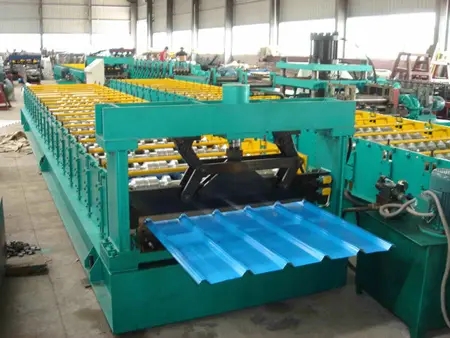
Understanding PPGI Prepainted Galvanized Iron Coils
Prepainted galvanized iron coils, commonly known as PPGI, have become an essential material in a myriad of industries due to their durability, aesthetic appeal, and versatility. This article explores the characteristics, manufacturing process, applications, and benefits of PPGI, illustrating why it has gained prominence in the market.
What is PPGI?
PPGI refers to steel substrates that have been galvanized to prevent rusting and then pre-painted with a variety of colors and finishes. The galvanization process involves coating the steel with a layer of zinc through hot-dipping, which enhances its corrosion resistance. After galvanization, the coils undergo a painting process where they are coated with one or more layers of paint, allowing for a diverse range of colors, textures, and finishes. This combination of zinc and paint provides a long-lasting and protective exterior.
Manufacturing Process
The production of PPGI involves several critical steps
1. Galvanization Steel coils are cleaned and then coated with zinc in a hot-dip galvanizing bath. The zinc layer acts as a sacrificial anode, protecting the underlying steel from corrosion.
2. Surface Treatment After galvanization, the steel surface is treated to enhance paint adhesion. This can involve processes such as chemical cleaning or applying a phosphate layer.
3. Painting The pre-treatment surface is then coated with paint. This could be done via several methods, including roller coating, spray painting, or electrostatic spraying. After application, the paint is cured in an oven, which helps achieve a stable and durable finish.
4. Cutting and Packing Once the coils are painted and cured, they are cut into desired lengths and packed for shipping, ready for industrial use.
Applications of PPGI
PPGI is widely utilized across various industries due to its excellent characteristics. Some common applications include

- Construction PPGI is frequently used in roofing and wall cladding, providing both structural integrity and aesthetic versatility. - Household Appliances Many household appliances, such as refrigerators and washing machines, feature PPGI due to its attractive finish and corrosion resistance.
- Automobile Industry PPGI is used for components like car bodies and other parts, which require a balance of strength, weight, and aesthetics
.- Furniture Modern furniture often incorporates PPGI, blending metallic finishes with contemporary design.
Benefits of PPGI
The advantages of PPGI are numerous, making it a favored choice for many applications
1. Durability The combination of galvanized steel and protective paint makes PPGI exceptionally resistant to corrosion, rust, and weather conditions, extending the material's lifespan.
2. Aesthetic Flexibility With a wide variety of colors and finishes available, PPGI can meet diverse design requirements.
3. Cost-Effectiveness PPGI is economical in terms of material and maintenance costs, making it a budget-friendly option for manufacturers and builders alike.
4. Environmental Considerations The process of manufacturing PPGI can be more environmentally friendly compared to other materials, especially with advancements in coating technology that minimize harmful emissions.
5. Ease of Fabrication PPGI is lightweight and can be easily cut, shaped, and fabricated, allowing for quick and efficient installation.
Conclusion
PPGI offers a perfect blend of beauty, strength, and functionality, making it an ideal choice for a wide range of applications. As industries continue to demand materials that are both aesthetically pleasing and durable, the popularity of prepainted galvanized iron coils is expected to grow even further. With constant innovations in production methods and coatings, PPGI is set to remain a key player in the material landscape for years to come.